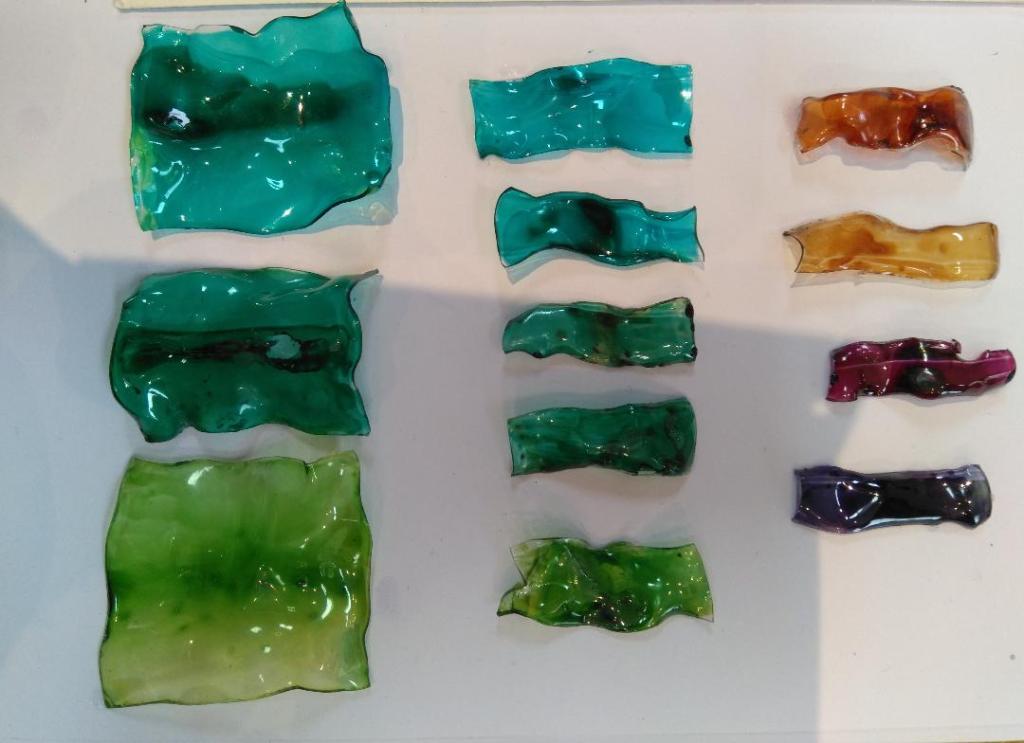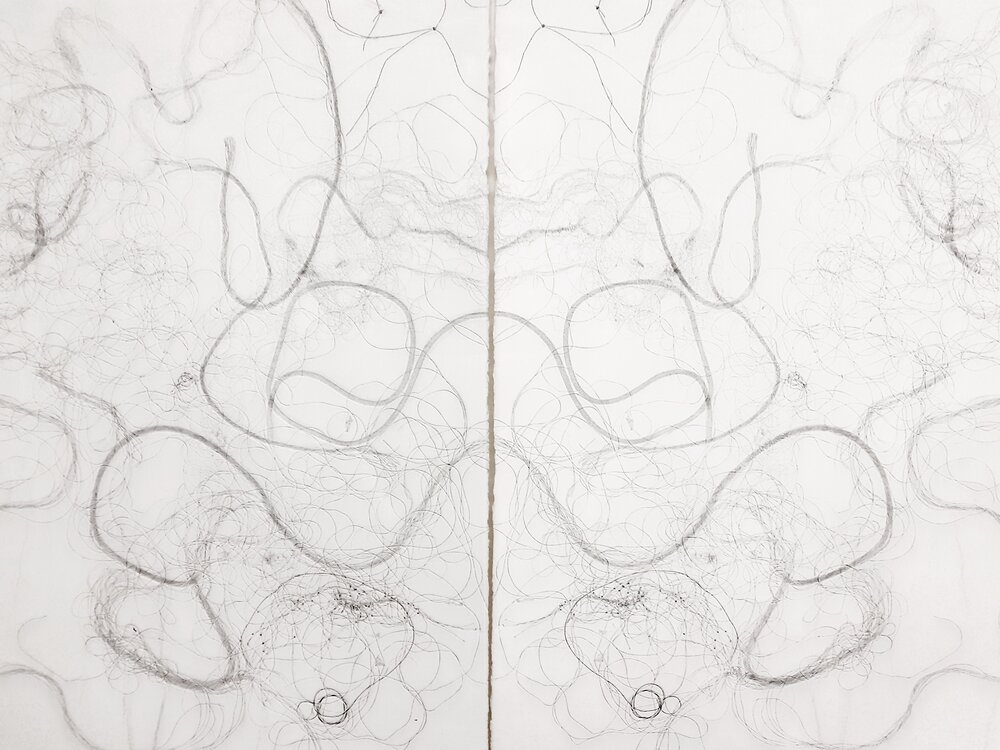In Part One I focused on life’s journey of the beautiful natural things I gathered. During lockdown, I became vexed by how quickly our lovely countryside became littered and I was incensed by the pollution. After researching just how big the pollution problem is, I decided to work on this for my assignment.
With each polythene bag taking10 years to biodegrade, single use bottles taking between 450 and 500 years to biodegrade and an island of plastic garbage twice the size of Texas floating in the Pacific, no wonder I am concerned. The world cannot cope with recycling plastics properly. According to National Geographic, 91% of all plastic ends up in landfill sites with 10% finding its way to the ocean. A study conducted two years ago predicted that by the year 2250 the ocean will contain more plastic than fish.
Without a doubt this is a global problem that requires the nations of the word working together to find solutions. In the late 1950’s saw a rapid increase in plastic production. It was inexpensive to produce and disposable, making it convenient to the worlds food industry. It has come at a cost to our global footprint and is a huge threat to animals, sea creatures and ultimately to our food chain.
I started by mind mapping plastic pollution, which confirmed to me that the problem is massive.

I decided that I didn’t want to create an installation made from plastic because it has been done so many times by artists and activists. When I first saw the work of Jessica Stockholder I was quite confused about her creations, but listening to her I began to feel inspired. I liked the idea of reshaping something and giving it more than its original purpose. She oozed enthusiasm about how she would change a single use object giving it a new cathartic voice. I wanted to take the plastic pollution and give it a different purpose.


I then took plastic bottles, bags, crisp bags (bleached them several times) and began to melt them to see how they would change. The crisp bags and thin polythene bags were not as fascinating as thick polythene, plastic bottles and soft squashy plastic. I couldn’t get the temperature high enough to melt very hard plastics that I found (nor did I want to deal with toxic fumes that would ultimately negatively alter the carbon footprint- as if it isn’t bad enough), so I abandoned them. The most satisfying result came from water/lemonade bottles. I painted the plastic with glass paint and melted them.

Melted polythene bag and melted crisp bag

Melted plastic (painted with glass paints)

Melted plastic bags (heavy duty) & melted eye dropper
I toyed with making a painting of jelly-fish using plastic but I felt that it would be an illustration and wouldn’t develop my handling of paint. I also thought about the colours of plastic after micro organisms form on it and I thought about creating an abstract o colour pollution. I was thinking about how Katherina Grossee saw colours without the boundary of shape. I began to sketch and work with this idea but I didn’t connect with it in the way I wanted to.


I liked how Mark Bradford layered paper from billboards and newsprint then built his narrative using paint.

Cerberus by Mark Bradford
I wondered if I overlapped and layered the plastics and paint in a similar style to Mark Bradford that the plastic could become an extension of the paint.
I gathered a bundle of broken fishing line, and what I assume were pieces of plastic string from lobster nets, sun-cream bottles and plastic bottles. The fishing line shrivelled when heated and became unusable, as did the netting.
The fishing line reminded me of Lydia Halcrow’s Ghost Nets – Standline iii 2020.
Decomposing straggling pieces of net, dead to their former purpose but a sinister ‘ghost’ lurking in the waters. Makes me shudder at the damage these little pieces can do to the sea creatures.

Lydia Halcrow
My own sketch was done using paint squirted from syringe. My thought was ironically that the syringe filled with medicine would normally make animals better, squirting paint to represent the bundle of fishing line that makes sea animals and fish ill.

Having worked with the plastics, I thought that I could colour and shape the pieces and melt them to resemble the ripples of the sea. I wanted to create a sea of plastic that would hopefully get people talking about recycling and perhaps even link the piece to the ‘sea of plastic’.

Although I had intended to create four paintings, I started off with just one canvas board 20 by 16 inches. I think I was worried that it wouldn’t turn out the way I wanted them to.
I started by painting a wave then melting plastic I had cut into strips and curls. By firing both sides of the plastic it created ripples. I found that by turning the piece to heat only the edge, I could bend it to form a curl. The bottles were mostly small so large waves could only be made using bigger bottles. However, I found that overlapping the small coloured pieces added to the lovely colours. The white plastic bottle tops and suntan lotion bottles, when melted looked like the white of the foam. I also used a child’s string of beads to create the spray from the wave. At this point I felt that it was working, so I painted the scene on the other three canvasses. I then went back to gather more plastic.



I started to lay the pieces out on the canvas. It seemed wrong to enjoy working with plastic when I hate plastic pollution so much.
Like Jessica Stockholder, I spent a lot of time moving the pieces about and trying them in different positions. I liked the tones I could create when I overlapped two colours or even just overlapping the same colour gave it a slightly deeper hue. It made me think about the value that Katherina Grosse placed on colour. The tones were quite beautiful. When using the glass paint I found that the colour would ‘pool’ in the curves of the plastic. At first this frustrated me but I later realised that it created more tone. By experimenting with heating the areas where the paint had gathered in pools I could create deeper tones. Some of the paint accidentally dropped onto other pieces. Again, I was frustrated with this until I melted the piece and found the effect to like those lovely tones thrown up by waves as light catches them. Where the paint slid about leaving gaps of clear plastic, I think it looked like sparkling droplets of water. There was a large amount of unpredictability in both painting and melting which I think I embraced. Soft plastics, such as the sun-cream bottle, melted at a lower temperature and I was able to stretch it to make long lines of plastic. Translucent bottles buckled then ignited. It took a long time and a lot of patience to time each piece and to work with the different plastics.


I wanted all four paintings to join and almost ‘flow’ together. Although my painting formed a wave of plastic, my original thought was to explore the materiality of plastic. In my sketchbook I recorded the change in transparent plastic as it became very hard and buckled when heated. As light hits the undulations it creates a number of tones. Opaque plastics were stretchy when heated and the thickness of the line depended on how quickly the plastic was stretched. Jessica Stockholder created something beautiful by exploring the materiality of mundane objects.
My objective was not only to investigate the materiality of plastic pollution, it was to encourage the observer to question my choices and to reflect upon their own use of plastic. I almost want observers to self-coach themselves into rethinking their contribution to the global footprint. The final piece is a sea of plastic with a big wave. I wanted the wave to represent the growing problem of plastic pollution. Unless nations work together, the problem will continue to escalate.
